Jodie Niss On Inspiring Creativity During the Pandemic

Jodie Niss is an artist and esteemed art teacher based in Brooklyn, New York. She first started teaching in 2006, and has recently set up her own art school: Jodie Niss Studio.
During quarantine, Jodie found an opportunity in teaching art virtually, and in doing so paved the way for other art schools in NYC to adapt their teaching methods to the COVID climate. What started out as an idea to keep afloat during these trying times turned into a pioneering project for the creative industry in the city. With workshops for other art schools, her own innovative lesson plans and students across all classes, Jodie has continued to inspire creativity during the hard months of the pandemic.
Jodie tells us why creative expression is more important than ever in a time like now that is wrought with uncertainty and fear. That is why her pay-what-you-can weekend classes are financially inclusive and open to all ages and levels. Every class is another opportunity to sharpen your painting skills whilst having fun with it and dedicating that time to yourself. I can attest to this wholeheartedly. I sat on my bedroom floor on a lovely Sunday afternoon hearing Jodie’s guidance through my laptop as I (and other students floating on my screen) painted my own version of underwater creatures with watercolours – you would have had to remind me I wasn’t in an actual studio. “Just have fun with it! It doesn’t have to be an exact replica, do what feels right”, Jodie said reassuringly. One of her students likened her watercolour classes to ‘yoga on a Sunday’: calming, therapeutic, and leaving you with a warm feeling of accomplishment.
Jodie encourages her students to follow their intuitions in art after her own artistic style. Jodie opens up the conversation by asking viewers to find the questions her oil paintings are posing. The subjects are raw, striking and daring; sometimes combining the vulnerable with the animalistic. By putting survival, culture and nature on the same canvas, Jodie exposes the complexities of the natural experience of the world.
FRONTRUNNER talks to Jodie about her teaching philosophy, the challenges and opportunities of switching to virtual classes and one of her latest paintings of two turkeys fighting each other.
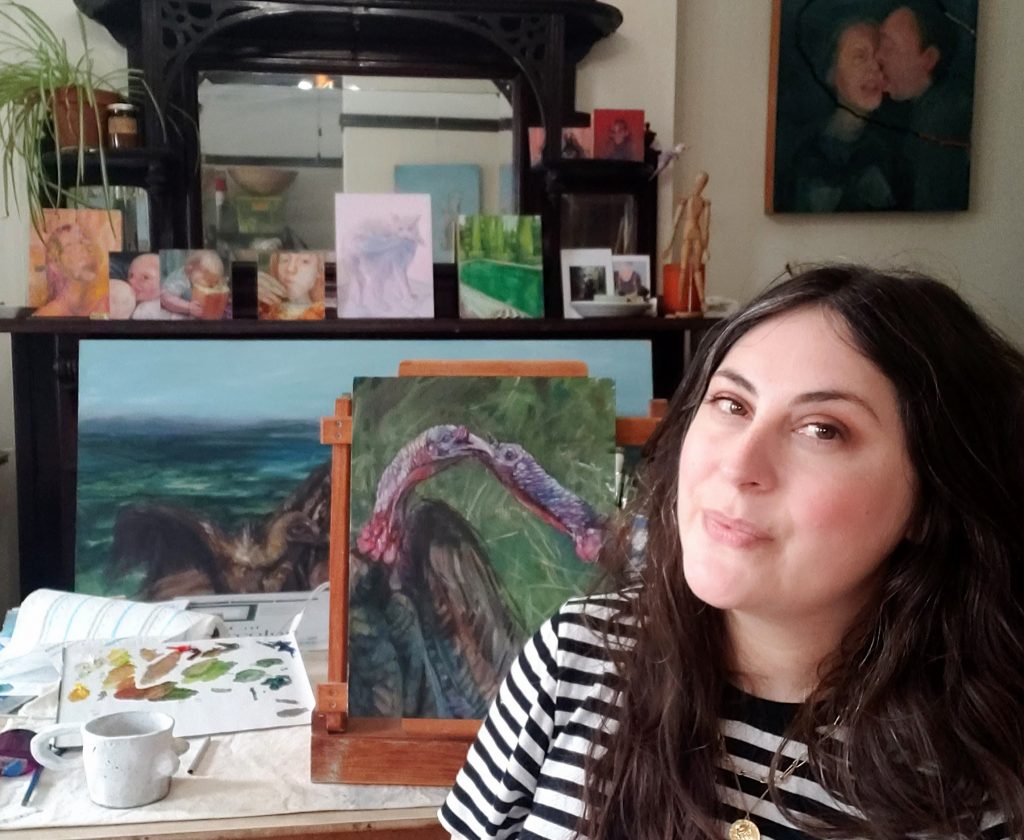
Where is your favorite place in Brooklyn to go to unwind or gather some inspiration?
Lately, I’ve been going to the botanical gardens and prospect park. I love to look at nature in all the different seasons and different times of day. I love to see how light changes depending on the time of the year and time of day. I also enjoy just walking around and looking at how people interact and take in life. whether it’s taking selfies in front of a tree, or building a snowman.
Could you talk a little about your art school and classes and how it has evolved during the pandemic. How did the idea for the pay-what-you-can classes come about?
What a wonderful question. I have been teaching for over 15 years for a variety of art schools. I have always loved teaching art, but it is difficult to pay bills by just teaching alone, so I’ve always worked other jobs as well . Many times I played with the idea of starting my own school, but I felt that teaching and my studio practice are the heart of who I am. I was worried that running a business would take away from that.
When the pandemic hit I saw an opportunity hidden in the fear of potentially not working. I had no idea if the freelance teaching jobs would keep going and I wanted to use this time as a chance to do something new and help people during quarantine. I decided to start my own Zoom classes under Jodie Niss Studio. It’s my own school, but without the overhead of a business that I feared. I have worked really hard on building a following throughout the years and focusing on who I am as a teacher and what my goals as a teacher are. This hard work really helped me know what I wanted to do and how to get started. Teaching is a constant state of learning and I really love that about it. So, I started to figure out how to teach on Zoom. It’s so different from teaching in person and it took a lot of hard work.
Jodie Niss Studio is a weekend drop-in watercolor class with a pay-what-you-can donation model. I wanted to create a fun safe place to bring people together to learn and be creative during the pandemic. The schools I work for then asked me for advice on how to start their virtual classes. I was happy to help them and continue teaching with the schools I love during stay-at-home. I even started doing workshops on how to teach art on Zoom. I like finding ways to simplify and help fellow teachers and students so they can stay creative and active during this pandemic. As a teacher my goal is to give my students what they need to be their best selves, whatever that may be.
I am now teaching on zoom with 6 different programs including my own. Before the pandemic, I mostly taught in person classes for painting in oil, acrylic and watercolor. Teaching on zoom has also allowed me to expand with new lesson plans, and new classes that I would not have had the opportunity to explore otherwise.
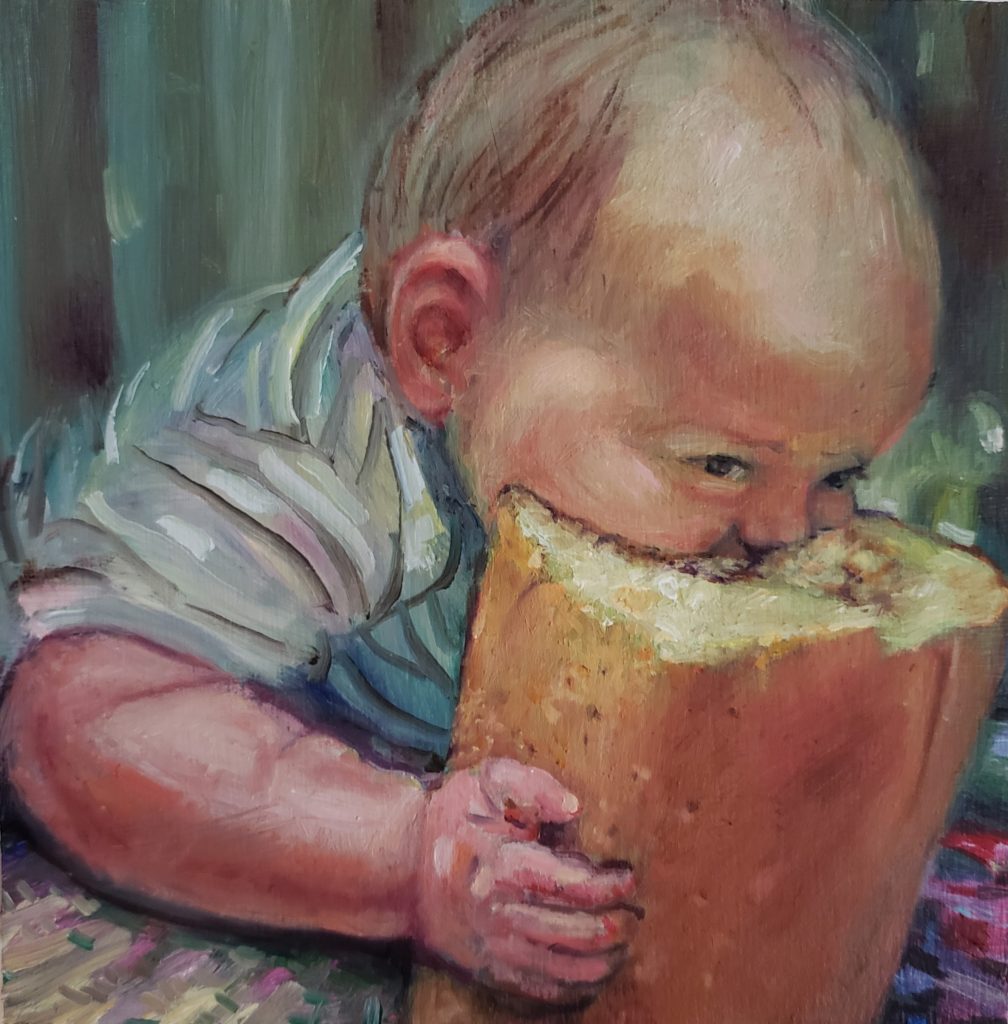
What has been the greatest challenge for you when adapting your classes to the virtual model? What surprised you?
There have been many challenges in adopting my class to virtual. But some of those challenges have made me a better teacher. Because virtual teaching was so new, I was given the opportunity to create all new lesson plans and to teach classes I had never had the opportunity to teach before. I have been surprised that the structure of my zoom class has helped me get some of my advanced students to do the lessons they were previously hesitant to do. In return those students have advanced so much this past year. Almost every virtual class I give a new demo and lesson. Overall zoom class has more structure. I encourage everyone to try the lesson, but I also allow students to do what they feel they need from the lesson, or to do their own thing. I think having students see the lessons, even if they don’t fully follow the lesson helps them step out of their comfort zone. It has been challenging to constantly make new lessons, but I have also loved this challenge. Before COVID there was a lot of class time spent working one on one with students, and less structure. I still try to fit in one on one time but it’s not so private on zoom. Everyone is involved.
It is a lot more work teaching virtually. I have to plan out my demos in steps and email what we will be doing every week. I send info about the next class, photos, websites to look at and I personally review students’ work if they need extra help. Previously I would mention stuff in class or show students stuff on my phone for them to look up later. Class time is also much shorter virtually. Zoom class is time for teaching, demos and questions. Students paint during class but it is not as long as an in person class. It would be strange for me to quietly watch students paint for 2 hours on zoom like we do in person. So my goal is to encourage students to get more painting in after class and to show me their new work in the next class.
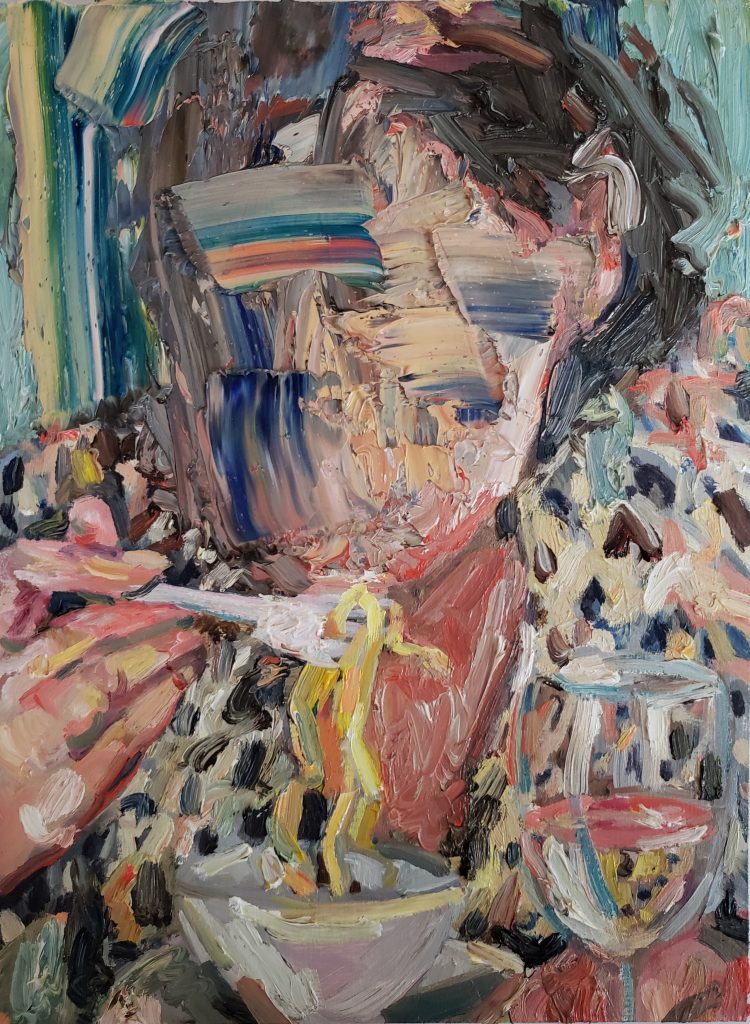
I noticed you have great relationships with some of your students – I could tell they felt comfortable in your class.
The relationship between an art teacher and student is a very personal one. There is a trust that must be built. Being a student/artist and sharing one’s artwork can be very intimidating or can leave one feeling very vulnerable. As a teacher it is my job to help the student find their voice, and to encourage their personal artistic journey in a safe place. Confidence is built on trust and support. I always joke about being only a little psychic. I need to be sensitive to my students’ needs, and this creates a friendly environment. My online classes and continuing education classes are not designed to be like college courses. Although I often teach the same curriculum. These classes are designed to encourage everyone to find the joy of art-making and community is part of that. I really care about my students and it is so rewarding when someone lets me know how I have helped them in any way.
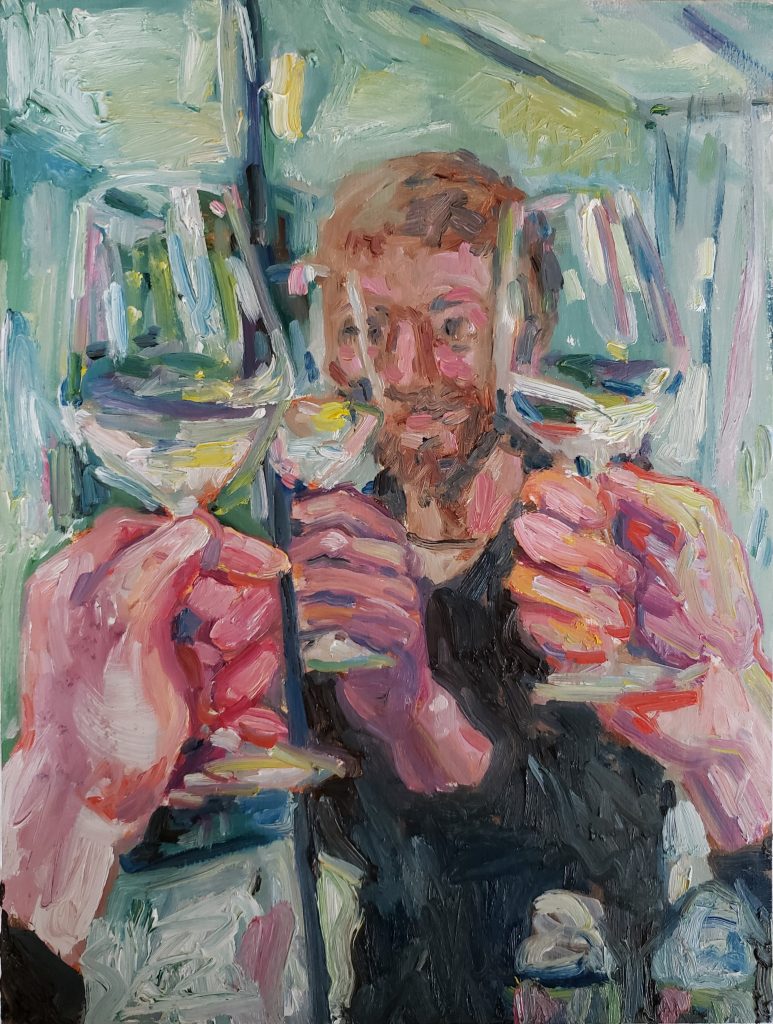
What is one thing you always tell your students?
Treat every object or thing you are painting or drawing as if it’s alive and has a personality. It’s not just an object – it is a painting of an object made by you, and you have personality.
Could you describe your teaching philosophy? How different is it to your own philosophy as a creative with your own art practice?
My teaching philosophy is an extension of my painting philosophy. I have a love of teaneck. But that is because different styles or techniques can express different things. My work is about showing emotion and I love to play with the paint to do that. When teaching, I can be heavy with the technical info in the beginning. I try to teach good habits in the beginning and fully prepare my students on how to problem-solve in art-making. After teaching the basics on how to paint, the most important part is about encouraging my students to use art to express and speak through their art; whatever that might be. There is a lot of self reflection in art making and that can be frightening to some. I create a safe place for students to explore their creative side. My work is all about self-reflection, emotion and finding painterly ways to show it. That is what I do in my art and it is one of the main things that I bring into my teaching. Different techniques can express different things. My goal is to teach the correct technique for the individual or for the idea. I always tell them to find the mood in their still life or to give a tree a personality. It is important to not fight one’s personal style. That’s what makes a painting good. I try to nurture the need to create while showing them how different techniques can help them in their process of expression. I try to be intuitive with my students’ needs as much as I am with my needs as an artist.
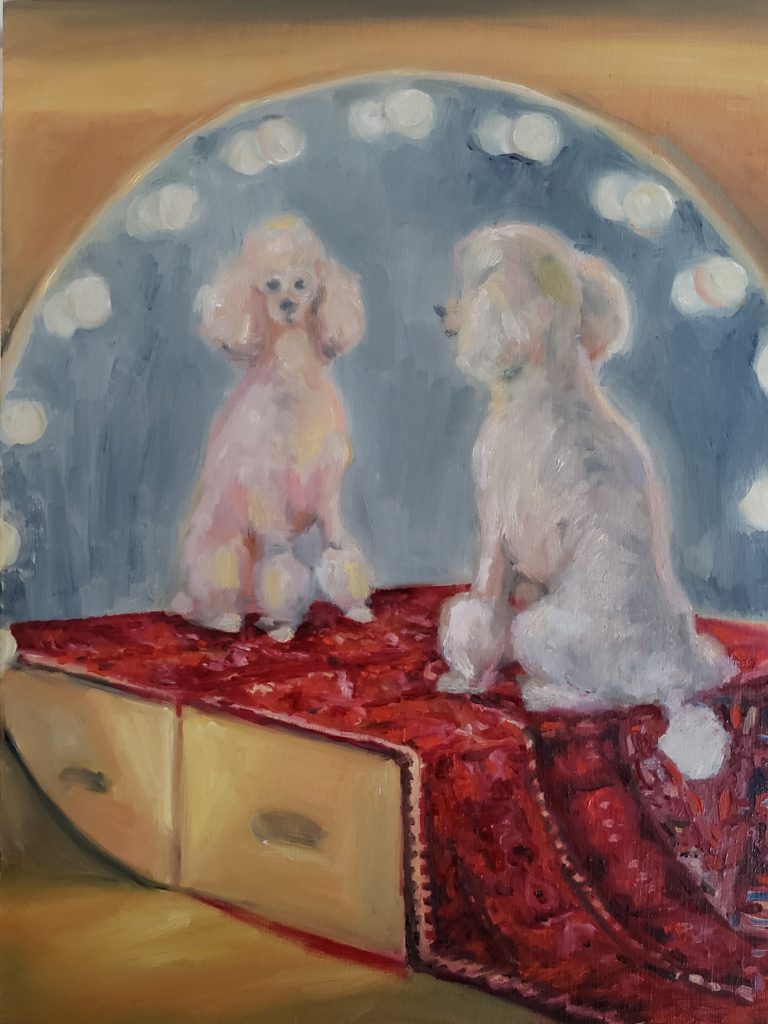
What advice would you give other teachers struggling with classes in the pandemic?
Find a way to simplify, and break down the lesson. Zoom can be overwhelming. Students often need extra images and slowed down steps to make it a calming experience. Ask students to tell you if they need help right away. You can’t see if they are struggling, like you can in a classroom. It’s really important to have good communication with your students on zoom. Think about what kind of class you would like and go from there.
Why do you think art and creative expression is important in a time like now, with the pandemic and everything that’s happening in the world?
The pandemic is an ideal time for creative expression. More than ever people need something to help them get through their fear and pain, whether it is painting, decorating one’s home, organizing a shelf, arranging a fruit bowl or buying art to hang. The pandemic is awful, but it has given people time to reflect and do things they otherwise didn’t make time for. It has allowed people to realize how much joy they can create through all forms of expression and art appreciation.
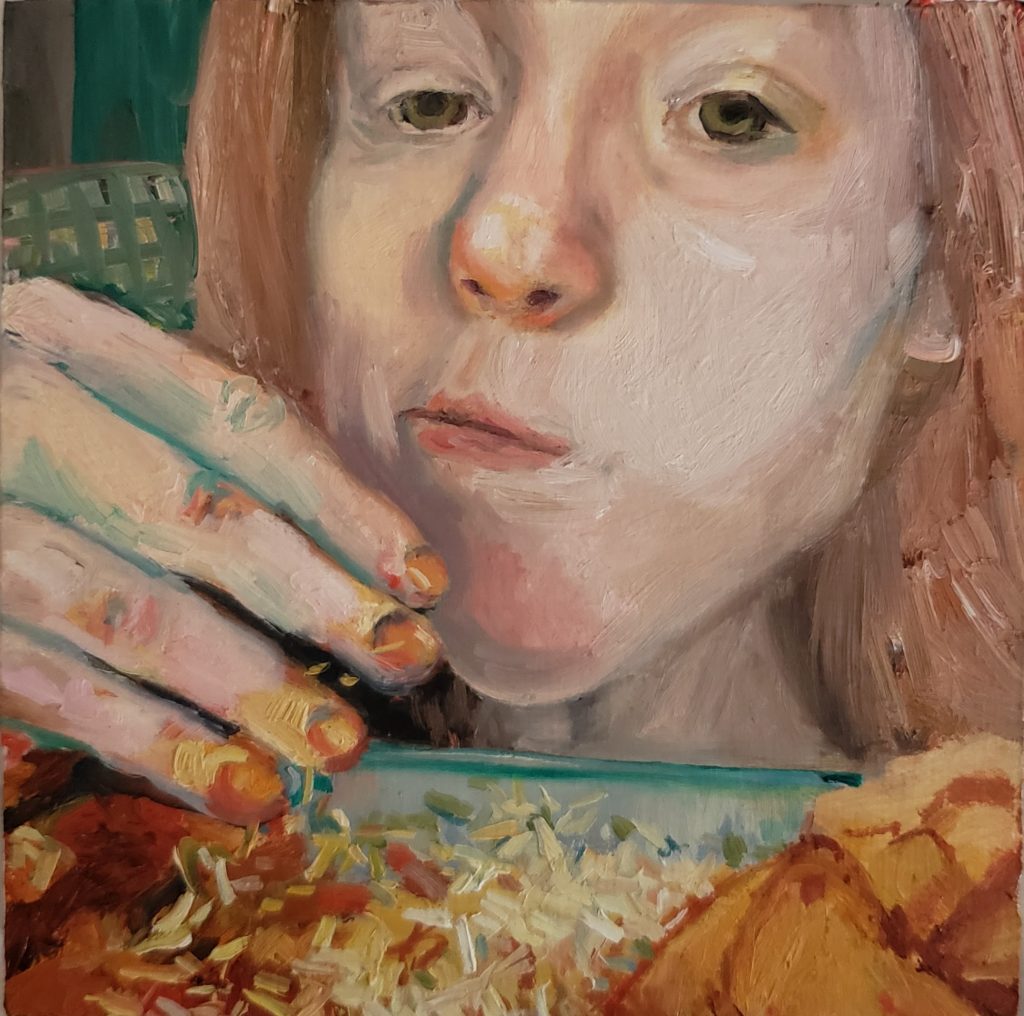
I like how you’ve described that you’re sometimes drawn to images that are unintentionally funny or profound. There is a raw, vulnerable, human quality to your paintings. Fleeting moments we wouldn’t normally catch ourselves in. Would you say that some of your art (particularly your oil paintings when viewed as a whole) is a social criticism or rather a social reflection?
Overall my work is a social reflection. At times it can be a criticism, but it’s more about opening up a conversation about the way people are categorized, labeled and manipulated by culture and the media. My discomfort with culture is also love. I am studying and questioning human/animal culture and nature. I am using it as a tool, and as a visual language to reflect my gut emotions. I love and sympathize with my subjects. A painting of an image can be used to say so much, by slightly changing it, by placing it next to another image, or playing with its color, and brushstrokes. Sometimes I paint an image to expose it for what it is in my view, or to highlight something awful, beautiful, and/or funny. In that frozen moment where my painting asks a question, I’m asking the viewer to look. The viewer will not know the full story of why I painted something, but I’m asking them to find a connection.
It is how I see and digest the culture I live in. Each image holds many thoughts and meanings to me. Each painting or series is my reaction to whatever I’m going through at the time I’m painting it. My emotions are not just mine. Others share similar stories, feelings and relationships to mine. I try to hone into that naked feeling. If I can evoke strong emotions in the viewer, I feel like I have done my job.
Tell me about this piece.
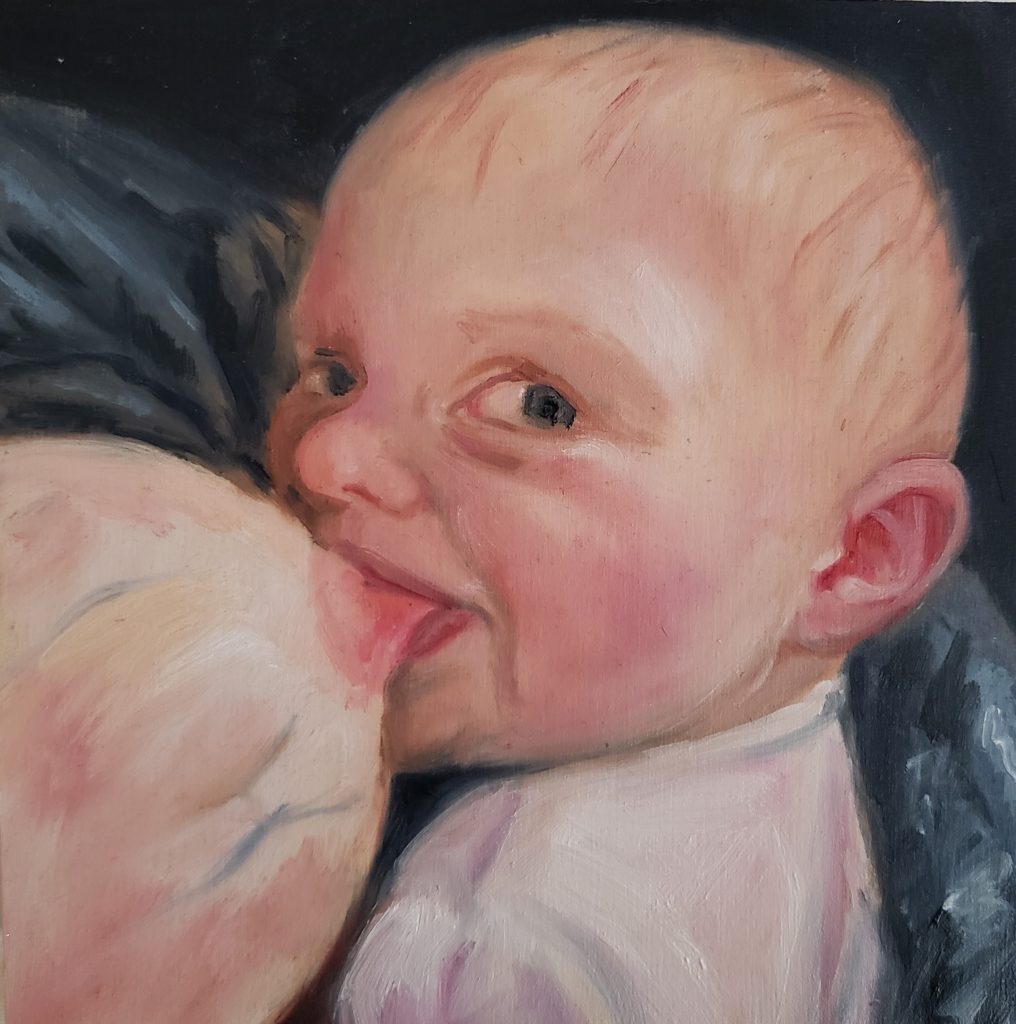
My paintings about people eating are about a human’s love and need for food. But food is so much more. It’s cultural identity, lust, pleasure, wealth, hunger, entertainment, joy, and survival. Each painting is a different story with a common thread. When we eat, so much emotion is exposed in the face. I try to capture that raw feeling I see in the face. In the painting of the breast-feeding baby, I try to capture the beauty, and joy of a baby breast feeding, as well as the breast pain and female sacrifice. There is also a long history of paintings of women feeding babies that I’m playing with. The breast is swollen, red and being pulled by the smiling, almost mischievous looking baby’s sucking lips. I’m talking about my fear, disgust, and wonderment of being a woman that creates life and food for that life. This painting is beautiful to me and sad because I may never know what it’s like. I fear it, want it, don’t want it, and I’m questioning its cultural image placement in my environment.
Do you ever experience creative slumps?
I don’t have creative slumps. I work day jobs to support myself, so my struggle is that I do not have enough time to paint, and work out my ideas and emotions. When I finally have time to truly be in my studio, I have hundreds of ideas. I get very overwhelmed and frustrated. It takes a day to figure out what to start with and how. This can feel like such a waste of time when you have so little time. But I have to remind myself that it’s part of my creative process to think, connect with myself, do research, and regroup before I can put paint to canvas.
What are you working on right now?
I am working on a painting of two turkeys fighting. Animals and people fighting or hunting is an old topic of mine. I was surprised that I felt a need to go back to this subject again after so long. But i’m very excited about it. It’s primal and breathtaking, and yet odd. It’s so easy to inject human reflection into these animals. Turkeys have beautiful colors on them, and at the same time their necks also remind me of the genitals, rashes and tumors that most people hide. I also like how they are fighting but also look like they are embracing.
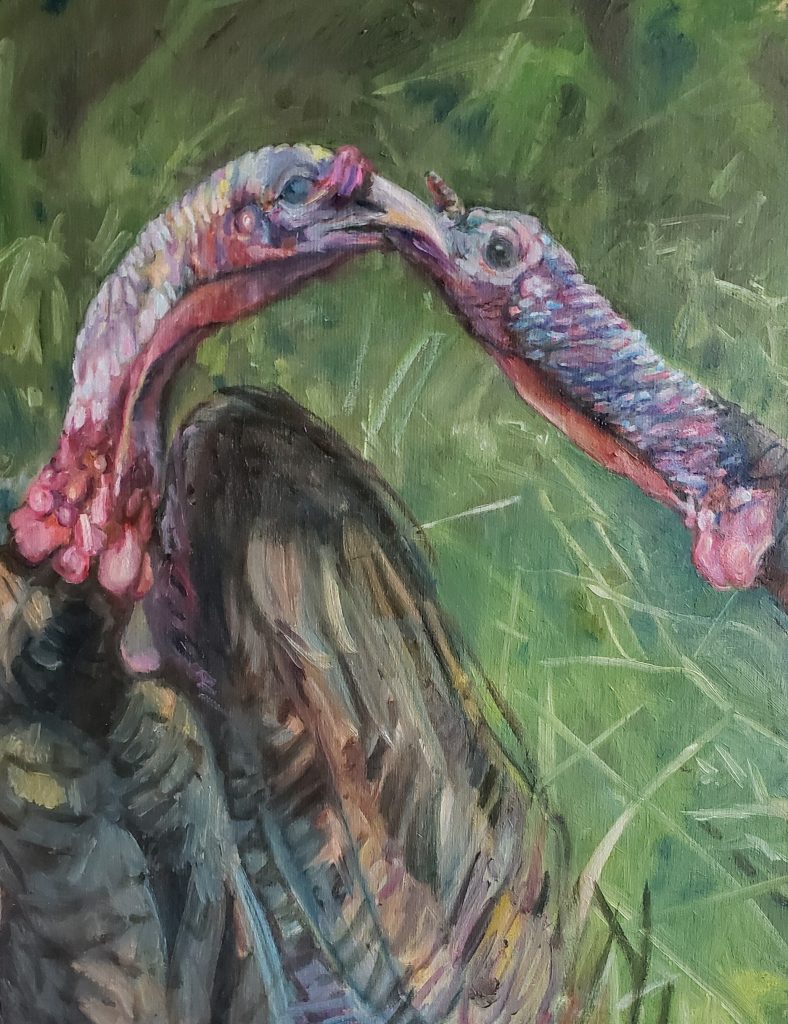

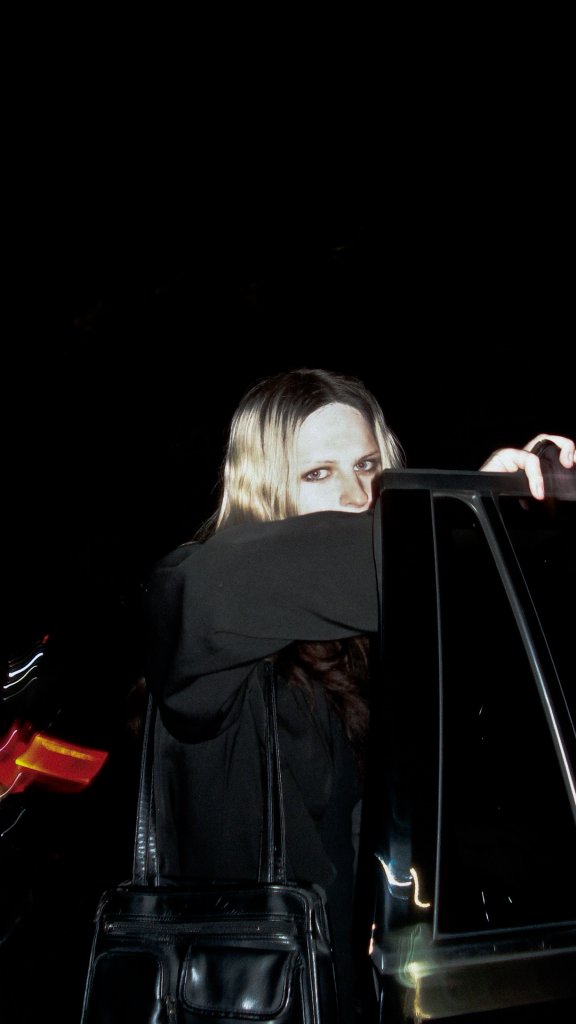
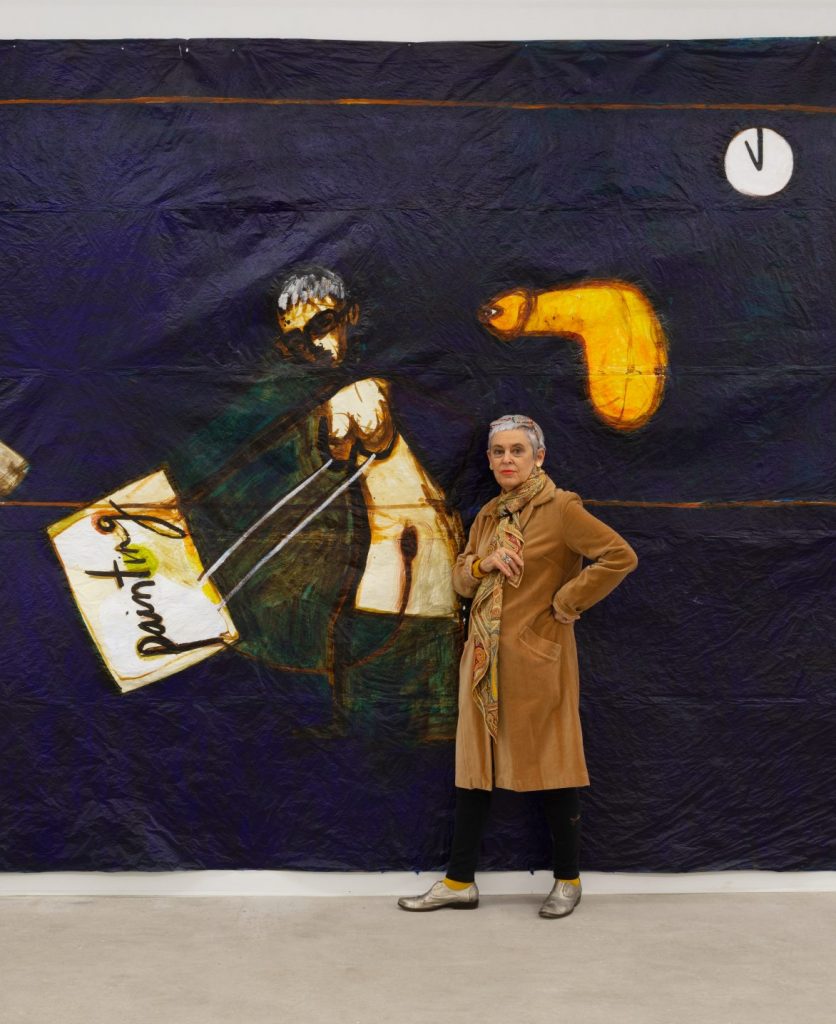

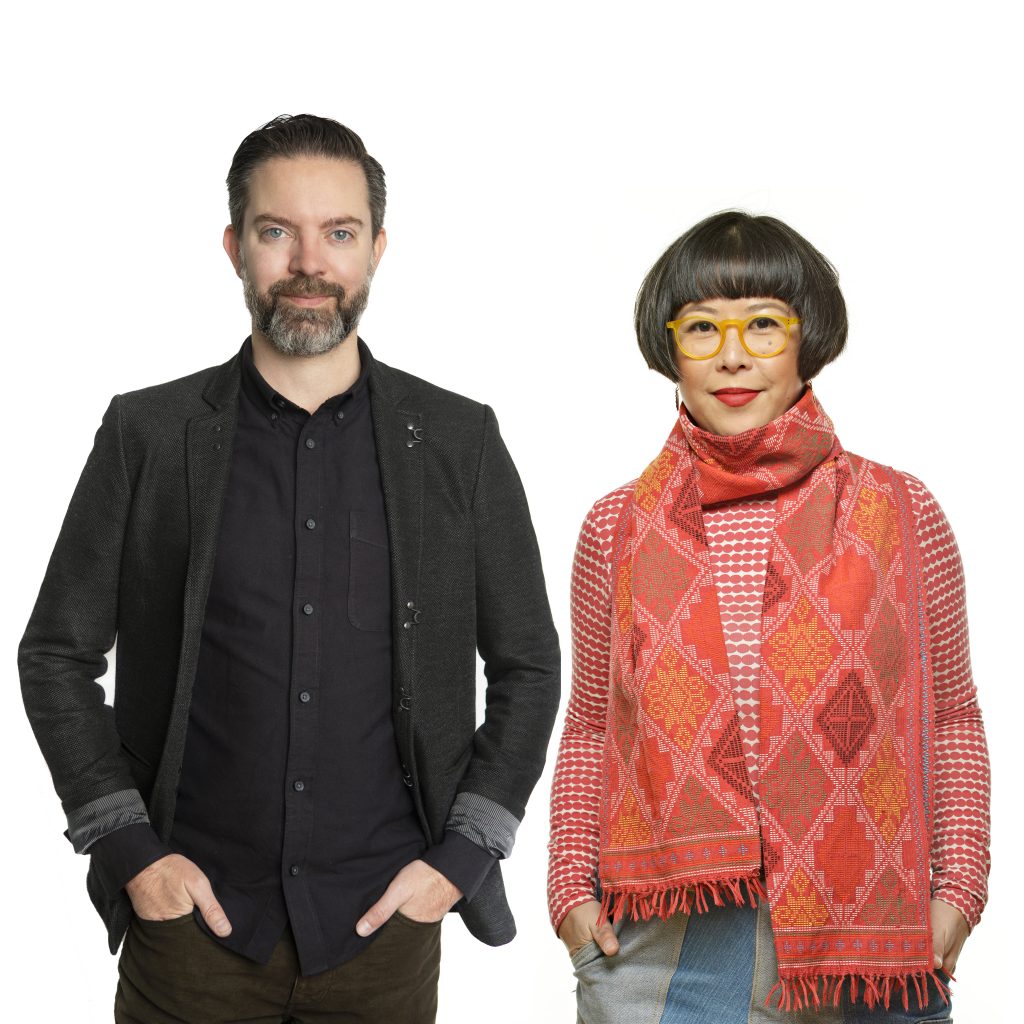
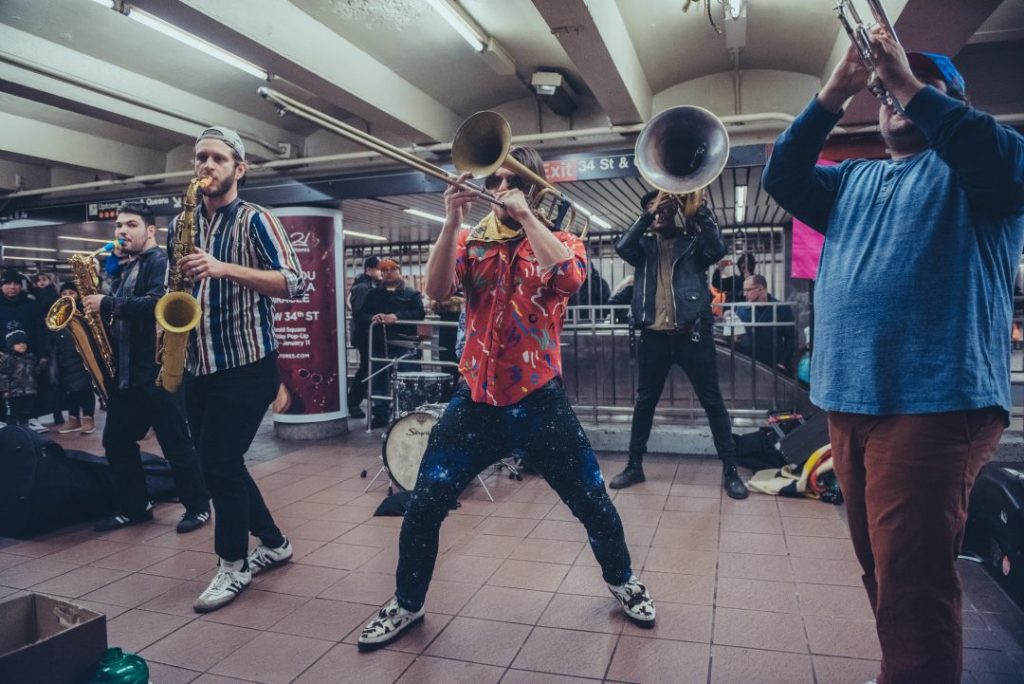
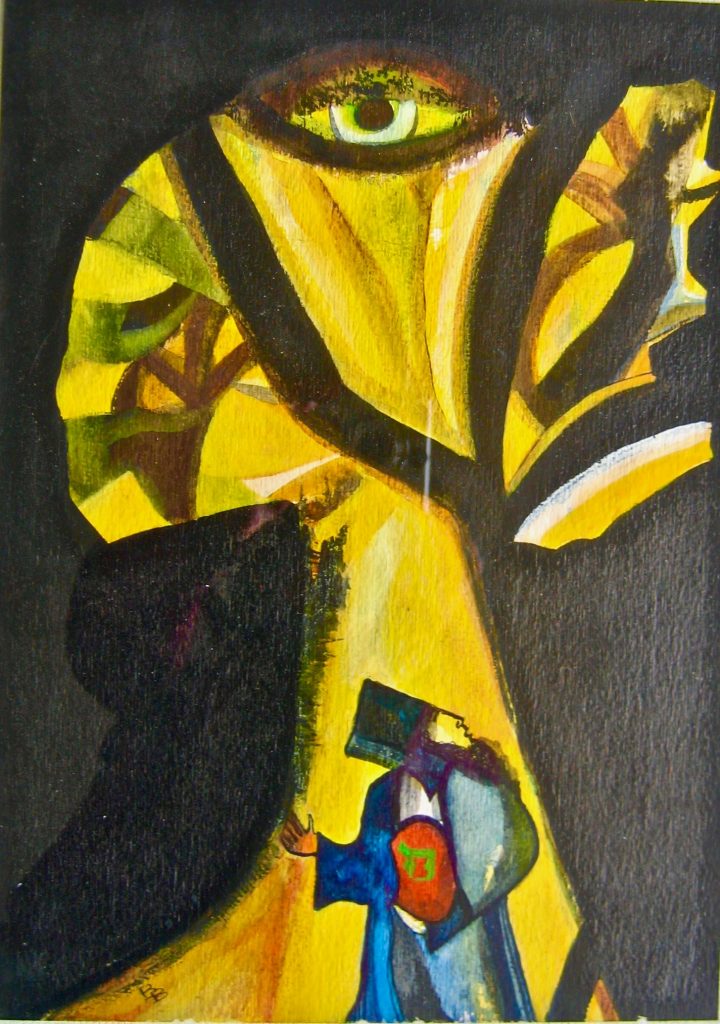
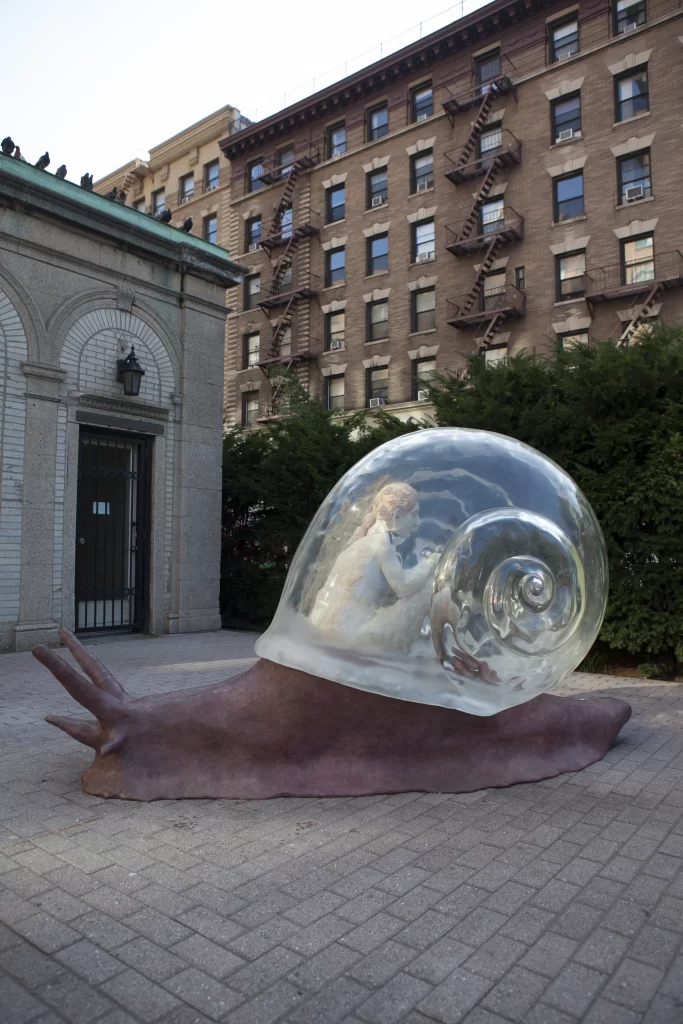
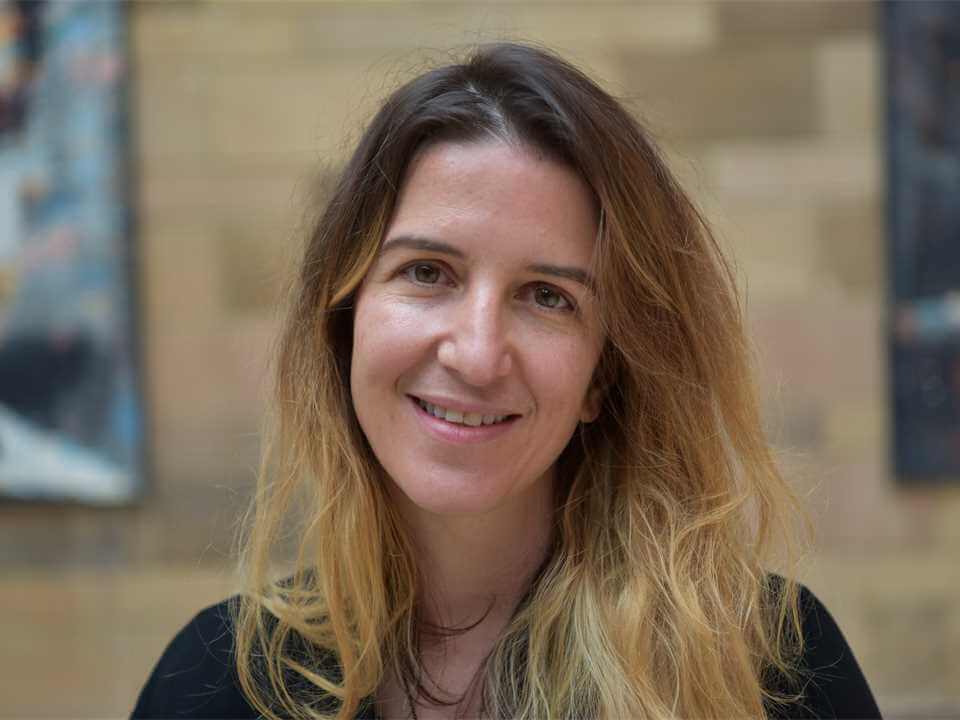
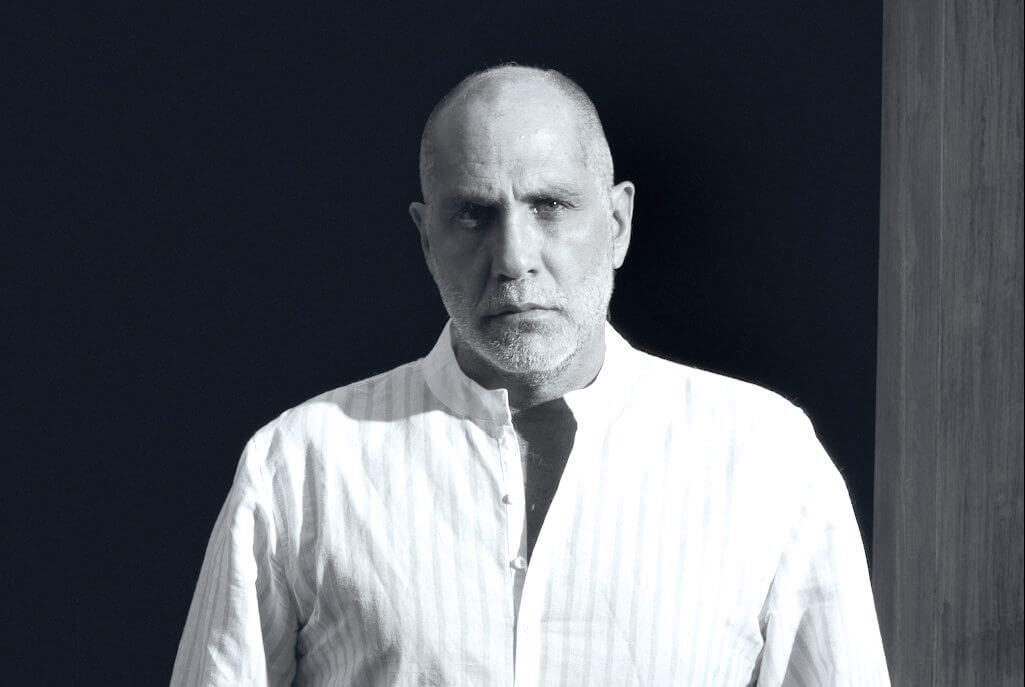

Responses